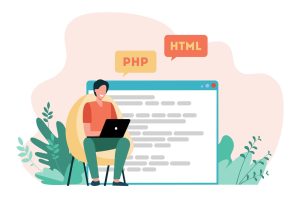WordPress is one of the most popular CMS and blogging platforms on the web today. These days, there are many different ways that WordPress can be configured for SEO purposes. Some people build their own plugins and some just use default themes. Regardless of what your needs are, there are always options to make WordPress Blog SEO friendly.
When you build your website on WordPress, you want to make sure that it is fast, it can be easily edited and most importantly – it’s search engine friendly.
Making WordPress blog SEO friendly is not a complicated process. At all. It’s as simple as following a few steps and working with WordPress’ core functions to fine tune your site for search engine optimization.
In this post we are going to discuss the tips to make WordPress blog SEO friendly.
Tip# 1: Do Some Research on Managed Hosting Services
Before installing WordPress, you should choose a hosting service that will keep your site secure and running smoothly. Security and speed aren’t directly tied to rankings, but a website that is slow or has been compromised will cause bad user experiences and traffic will be lost. This eventually affects how your site is ranked by search engines. When it comes to optimizing your site, managed hosting offers a number of advantages over other types of services. A managed hosting service shares some of the responsibility for maintaining and powering your blog. The company will monitor your site, conduct malware scans and backups, close security loopholes and make updates to WordPress plugins that are currently installed.
A managed hosting provider provides technology to run, maintain and troubleshoot a website. Managed hosting can streamline the optimization process, making it easier to improve your website’s search engine rankings. Once you’ve chosen a hosting provider, be sure to choose one that’s reliable and offers high-quality service. Blue Host and HostGator are two of the more well-known providers of web hosting in the WordPress community.
Tip# 2: Choose a WordPress Theme suited to SEO
Do you know that more than 50 percent of people visited from their mobile devices this year? In that case whenever someone searches for a query on Google, it shows mobile-friendly results at the top of its results pages. To ensure that your site looks good on both desktop and mobile devices, it’s important to pick a responsive theme.
You should consider a theme’s functionality and appearance when making your choice. A theme that is poorly coded or too feature-rich can make your site run slowly, and this will negatively affect the user experience and search engine rankings. The Brando theme is a good example of WordPress SEO optimized theme. The design is fully responsive, coded with HTML5 and CSS3 to ensure that it’s lightweight and SEO-friendly.
Tip# 3: Upgrade Your Permalink Settings
A permalink is a permanent link to the content you’ve published on your WordPress site. The default permalink structure used in WordPress is plain, creating random URLs for every page on your site can help search engines differentiate more easily in every page and content. This default setting will not improve your search engine rankings or encourage people to read what you’ve written. Changing your permalink structure to include keywords that you want to be associated with the post is a simple process. This allows search engines to determine whether your site provides information relevant to certain queries or not.
Just navigate to Settings > Permalink and select the option marked “Post Name.”
Tip# 4: Make XML Sitemaps
XML sitemaps are lists of pages created in XML format that search engines use to catalog and navigate your website. Though you can create a sitemap yourself, it’s a time-consuming process. Alternatively, there are plenty of plugins that can automatically create a sitemap for you. Once you have created the sitemap, upload it to the web server where your website is hosted and submit it to Google Search Console and Bing Webmaster.
The only way you can ensure that Google picks up the latest version of your website is to submit an updated sitemap regularly unless you are using any platform that upgrades automatically. This will help search engines better understand and evaluate your site’s content easily.
Tips# 5: Maximize the Impact of your Page Titles and Meta Descriptions
The titles and descriptions you use for your web pages play an important role in search-engine optimization. In addition to your web address, they give the reader an idea of what will be contained in a post or page once they click on it. They also assist search bots understand the significance of your content, so that they can match it with relevant queries.
In order to optimize the titles and meta descriptions, you need to include your target keywords and make sure that your article is long enough. Keep titles to 60 characters or less, and meta descriptions to 160. If a title is longer than that, you should try to frontload your most important keywords into the first 50–60 characters of it. So even if your post title is cut off in SERPs, the content will still be relevant to searchers.
Tip# 6: Optimize Your Blog Images on WordPress
Optimizing an image involves two steps. First, make sure you compress your images properly so that they don’t slow down your site. You can optimize your images manually or can utilize an image optimization plugin like Insanity. You should also make sure that your images include alt text. Alt text should provide a short but accurate description of an image, so that search engines can understand the content and it helps a site in ranking in image search results. Also, Google tends to rank image-based results above text links for some search terms.
Tip# 7: Link to Related Content on your Site
Internal links are one of the most important parts of on-page SEO. By including a link to your related content, you help search engines discover all of the different pieces of information on a single topic that belong to you. Doing the above step will improve the chances that you will appear for related searches. You can make your visitors happier and more loyal to you by linking them up with other helpful articles on your site.
You can manually add links to your site’s pages every time you create a new post. You can also automate the process of internal link building using a plugin. Link Whisperer is a WordPress plugin that adds links to your article as you write it automatically.
Tip# 8: Add Categories and Tags to Organize Your Content
Another way to make your site easier for both readers and search engines to navigate is by using categories, tags, and other metadata to structure your content. You can use categories to create sections in your blog. You can then apply tags more specifically. This will help you optimize your blog and by this you can create blogs for search engines and humans.
To create a category, go to Settings > Writing in your WordPress dashboard. To add a new tag or manage existing ones, click Posts > Tags.
How to Write WordPress SEO Friendly Blog?
Before you start writing your blog, you need to decide on a keyword or topic that your blog post will focus on. Using keyword research tools help you hunt relevant targeted keywords. Your title should be catchy and should include your chosen keyword. Your title should be clear, engaging and descriptive. Give your readers something to think about by writing content that’s relevant and interesting.
To make your content more appealing, use short paragraphs, relevant images and videos. Internal links are hypertext links that connect your website’s pages to each other. External links are hyperlinks that connect your blog post to other sites. Both types of links are important for SEO as they help search engine crawlers to identify the relevance of your content. Make sure to include relevant images and optimize them for SEO. Use descriptive file names and add ALT text to the images.
Meta tags are snippets of text that appear in the HTML code of a blog post. They help search engines to understand the content of your blog post. Make sure to include the keyword in your meta tags. Your blog post URL should include your chosen keyword and should be as descriptive as possible. Once you have published your blog post, you need to promote it to get more readers and to get more search engine visibility. You can share your content on Facebook, Twitter and other social media sites to help attract readers.
Which Plugin is to Make Your WordPress Blog SEO Friendly is the Best?
The best plugin for making a WordPress blog SEO friendly is Yoast SEO. It provides comprehensive optimization features that help maximize your blog’s visibility in search engine results. Yoast SEO also has a friendly user interface with helpful tips and tutorials that make it easy to use. Yoast SEO is continually updated to ensure compatibility with the latest WordPress releases.








